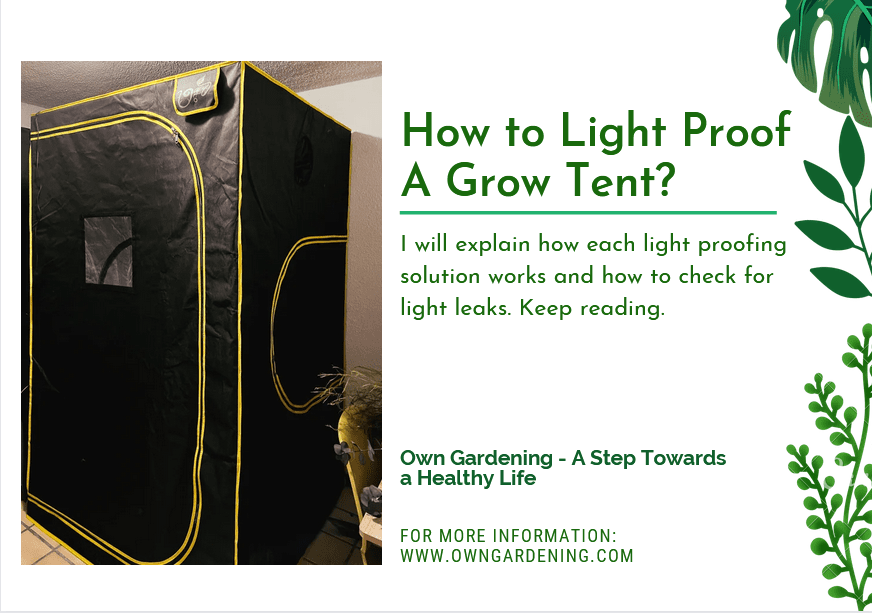Plants in the grow tent require a period of total darkness at night. So, if light seeps through your tent during this time, your plants could experience retarded growth. The good news? You can lightproof your grow tent. But how you ask?
How to light proof a grow tent is simple. You can use reflective sheeting, weather strips, cardboard light baffles, ducting, light traps, carbon filter pads, or an oversized garbage bag.
Below, I will explain how each light proofing solution works and how to check for light leaks. Keep reading.
How to Light Proof A Grow Tent?
Even the slightest changes in lighting patterns could stress your plants out in the grow room. This happens when most plants are in the flowering growth stages. Therefore, knowing how to keep light out of grow tent is critical. But how do you do it? Here are effective solutions you can try.
1. Cardboard baffle
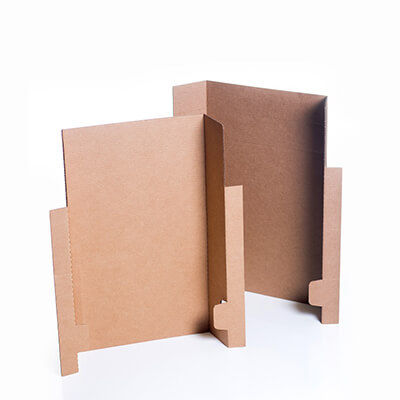
Here is how to make a cardboard light proof baffle for your intake vent using materials such as:
- Cardboard
- Ducting
- Black spray paint
- Aluminum tape
Start by getting the measurements of the area around your intake vent, including the length and height. Next, get your Velcro strips and cut them accordingly. Then, stick the strips along the border of the intake vent.
Next up, cover the entire cardboard in aluminum tape. The cardboard should be at least an inch wider than your tent’s intake vent. After that, get your piece of ducting about 4 inches and place more Velcro along the edges of the ducting. After that, take your ducting and fasten them on the cardboard with duct tape.
Then, apply the spray paint on the ducting inside before bending it to around 90 degrees. You can use more duct tape to keep the ducting at this angle. Lastly, secure the cardboard and duct around the intake vent using Velcro strips.
2. Reflective sheeting
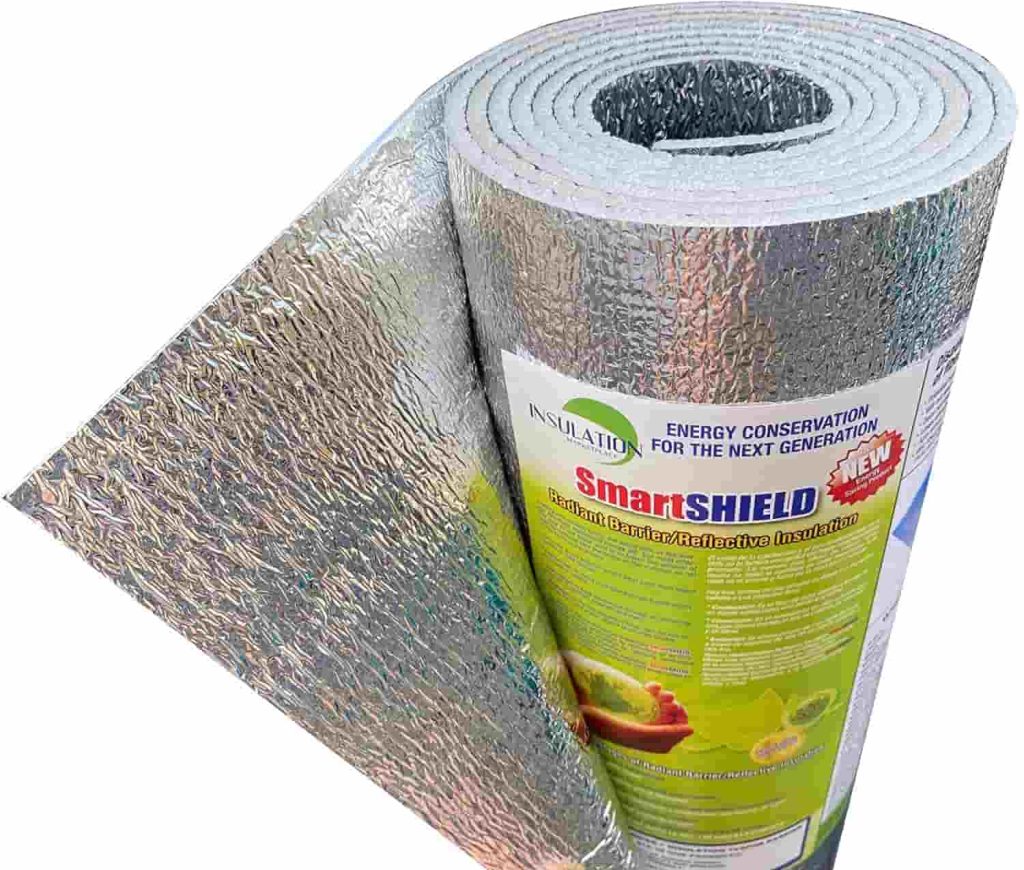
Unfortunately, curtains alone cannot make the grow room lightproof. So, I suggest using reflective sheeting instead to cover the windows. This will ensure natural light does not get into the grow light. Some of the best types of reflective sheeting to use include:
- Black and white reflective sheeting
- Diamond aluminum sheeting
- Mylar diamond sheeting
- Reflective plastic sheeting
3. Black garbage bag
One way to make the exhaust duct lightproof is using an oversized black garbage bag. Just wrap as many bags as possible around the vent and use a string to secure the waste basket. This will ensure no light leaks at your passive air intake grow tent.
4. Carbon-infused filter pads
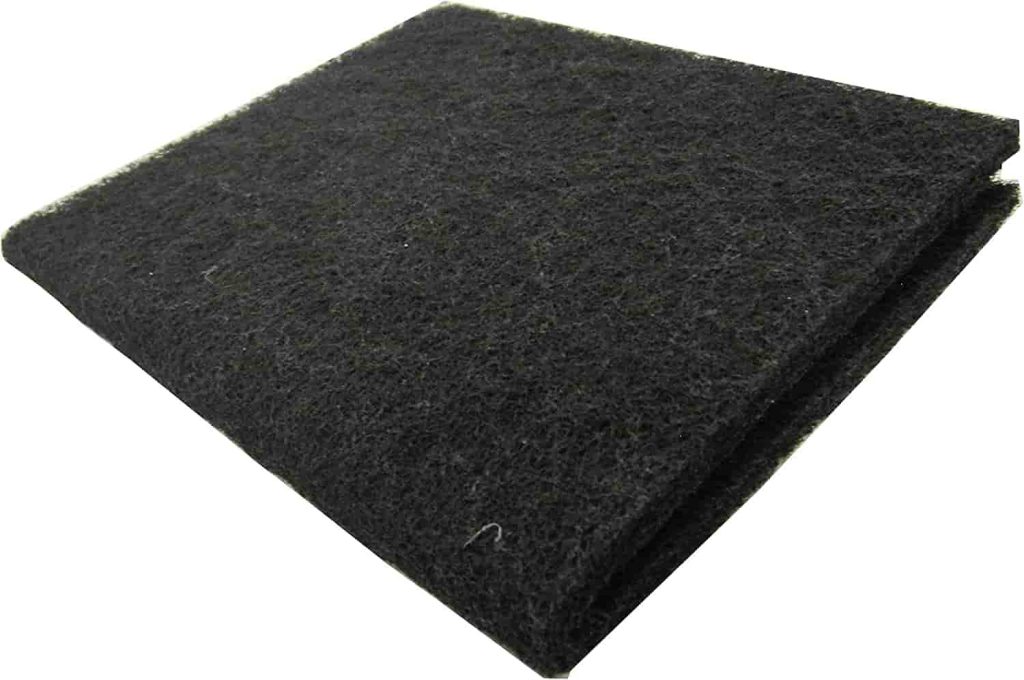
There are carbon pads designed for use in fish tanks. You can use these pads to lightproof the intake vent of your grow tent. The pads are cut to fit. Hence you can use them virtually anywhere on the tent, especially on light proof vent flaps. You simply use Velcro to secure them.
Alternatively, you can use a black carbon filter to light proof passive intake vents. These filters work best to keep the grow light in when the screened flaps at the bottom of your tent are open.
5. Light proof baffles
If you own a Secret Jardin grow tent, the manufacturer offers a light baffle to ward off any grow tent passive intake light leak. Besides blocking sunlight, it also permits air through to ensure optimal ventilation. Unfortunately, these baffles don’t work with other brands of grow rooms, but you can use cardboard baffles instead.
6. Cover the vent holes using ducting
Another way to lightproof your grow room is by blocking the vent holes. To start with, you can use a flexible duct and bend it in the shape of a ‘j.’ Then, stick the conduit to the vent holes for the best light-blocking vent effects.
Alternatively, you could use a 3-ft long 2 mil plastic sheeting. You simply roll the sheeting into a tubular design and use duct tape to attach it to the vent hole. Then, draw the strings tight around the sheeting for a snug fit.
7. DIY light trap
This method is effective when you have a grow tent passive intake light leak. To make a DIY light trap, start by measuring the shutter of your exhaust fan. Then, based on the size of your shutter, cut your panels in half, making sure each has two ridges to block the light. Next, you can drill two holes in your cut panels’ corners.
Next up, cut your threaded rods the size of your shutter’s width. Then, insert your washers and nuts on one end of your rods. After that, feed your four rods through the holes on your panels, making sure to add spacers before inserting another piece.
After inserting all the sheets into the rods, put another washer and nut and tighten up. Lastly, mount a casing for the light trap on the wall to stop light leaks.
8. Weather strips or duct tape
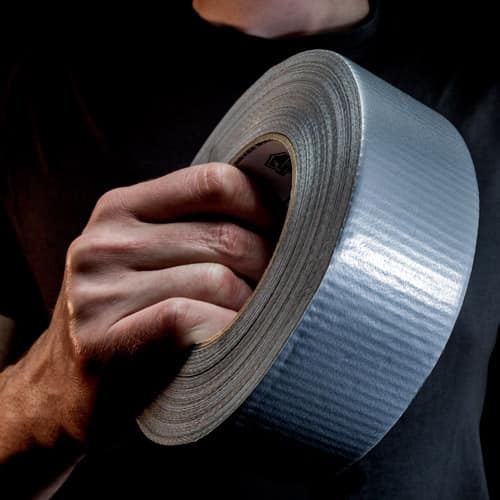
Besides sealing air leaks, you can use weather strips to lightproof the doors and the ducting of your grow tent. You simply cut the strips to your preferred size and attach them to the edges of your tent’s doors. But if you don’t have weather stripping, you can use different types of tapes to seal any cracks like:
- HVAC foil tape
- White duct tape
- Gorilla tape
- Electrical tape
Are There 100% Light Proof Grow Tents?
Most grow tents claiming to be 100% lightproof are only effective at blocking the light inside from escaping. Therefore, light may still get in through the vent holes, even when the grow tent flaps open or closed.
However, you can find high-quality tents with lightproof baffles on zips designed to prevent light from seeping. On top of that, some models come with drawstring ports that you can tighten around the ducting, keeping light out.
How To Tell If Your Grow Room Is Light Proof?
You first go inside the grow room and ask someone to close the door behind you. Then, switch off the grow lights but leave the lights outside on. After about 10 minutes in the dark tent, look for any light leaking and mark the spots with a marker. For the best results, I suggest you check for leaks at different times of the day.
FAQs
In this section, I will respond to commonly asked questions about how to keep light out of grow tent. Check them out.
Is There Anything Like Too Much Light In A Grow Tent?
Yes, and it could eventually kill your plants. For instance, in the flowering stage, your plants need only 12 hours of light. If they receive more light, their leaves could burn hence the need to lightproof your tent.
How Serious Are Light Leaks?
Extremely serious, especially during the flowering stage. Light leaks may cause your plants to revert to the vegetative stage during the flowering period. Also, your female plants could change into hermaphrodites due to light inconsistencies.
How Can I Fix A Pinhole Leak In My Grow Tent?
One way to lightproof your grow room is to repair any pinhole leaks. You could use gel nail polish or regular black nail polish. Simply apply 2-3 coats.
Conclusion
Plants in the grow tent need stable lighting, especially during the vegetative and flowering growth stage. So, knowing how to lightproof a grow tent is critical to avoid light inconsistencies and leaks.
For instance, you can use DIY light traps, cardboard baffles, ducting tape, garbage bags, carbon filters, or even reflective sheeting. All these solutions are very effective and cost-efficient. Besides, it is hard to find a grow tent that is 100% lightproof.

